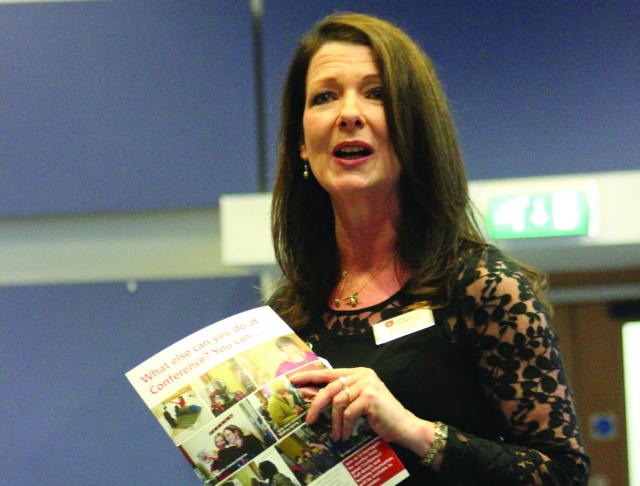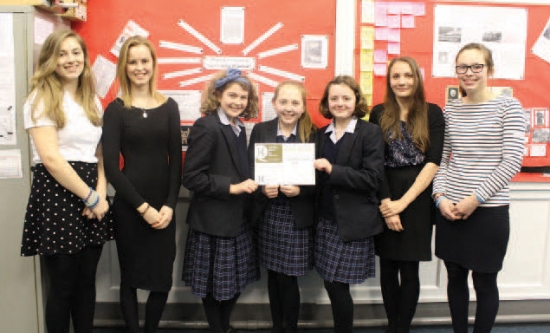Quality Mark: Interview with an Assessor
The assessor angle
An interview with Primary Quality Mark Assessor Beverley Forrest

"The assessors are like Ofsted with a smile!" - comment from a Quality Mark School
Some schools tell us that they find the prospect of an assessment visit daunting, and akin to an Ofsted inspection. We wanted to help break down that anxiety for schools and introduce you to the friendly face of our assessors. While assessors carry out a rigorous assessment of participating schools, they are looking to help you shout about the great provision you provide and to help you celebrate your achievements as well as benefitting the school with their expertise. Read our interview with Bev Forrest below to get a feel for the approachable expertise that pervades our QM assessment team.
Bev Forrest is an Associate Principal Lecturer within the Primary Education department at Leeds Trinity University. Following a first degree in history, Bev has also achieved a BEd (Hons) in Primary Education, PGCE in Secondary History and Master of Arts in Research in Education during her varied career that has seen her teaching across both the primary and secondary sectors. Bev is also a Fellow of the Higher Education Academy (FHEA), and is a Honorary Fellow of the Historical Association (FHA). Most recently, she has been a member of the Historical Association’s Quality Mark team of assessors and has been a key member of the team developing the award. Bev was proud to be the first person to award a Gold Quality Mark to a primary school. The HA and those schools that Bev works with are very lucky to benefit from her expertise.
We wanted to find out more about Bev’s experience of the Quality Mark programme as an assessor and some of her thoughts on examples of great provision and practice that she has seen, plus advice for any would-be QM schools.
Q: What has your experience of the QM been like? What do you feel you get out of it as an assessor?
A: I’ve worked on the Quality Mark from the outset and it’s been valuable for me to be part of the development process looking at how some areas have needed to be refined to reflect such areas as inclusion. It’s supported me in getting a much better idea of what good history looks like in a diversity of schools. And how some schools in very challenging circumstances and with few resources can provide a learning environment where children make good progress. A huge bonus for me is being able to use case studies from schools I have visited in my work as a teacher trainer. I am currently engaged in a research project looking at the impact of undertaking the Quality Mark process for primary schools and the initial response from schools is very positive. Yes of course it’s hard work, but anything that is so rigorous has to be. That said, schools have commented that this is the most valuable form of CPD they have been involved in and as such it is very cost-effective too. They really value having an expert in the field visiting their school and spending half a day working with them, celebrating what they do well but also providing them with guidance on how to develop further. Some schools have then gone on to use the Quality Mark model and process for history to support them in developing other non-core subjects.
Q: Tell us about some of the best examples of provision and practice you have seen through the QM?
A: The strongest area I have seen is leadership. A key element for success is an enthusiastic subject leader well supported by their management team. These teachers do not necessarily have a strong history background but what they do have in common is a passion to embark on the Quality Mark journey and use the 12 months to develop the subject within the school. It’s good to see how some recently qualified teachers have embraced the challenge of working towards the Quality Mark so early on in their careers and how the recognition it has given them has contributed to supporting them in developing their own career.
The history curricula have been planned very differently in all the schools I have visited. Some schools have followed a more traditional approach in interpreting the National Curriculum, teaching history as a separate subject both in Key Stage 1 and 2, while one used literacy to guide the teaching of history and I have visited other schools where history has been taught as part of the Creative Curriculum. What these schools have in common is the history driving the quality of the planning and a recognition of the importance of supporting pupils in making links and understanding the bigger picture in history. Enrichment is a key strength in the schools I have visited. Teachers are providing highly stimulating environments for their pupils and utilise strong community links. I recently saw how parents representing the cultural diversity of the school were used as a key resource. During the year they visited the school to talk about the history of their country of birth. This gave pupils a good understanding of how diverse history can be and for some pupils to celebrate their cultural heritage. It would appear that the school trip is very much alive and well as pupils are engaged in a whole range of meaningful visits both near and far. These are used effectively to enrich learning prior to the visit and in the following lessons. There are also some wonderful examples of schools working in the community on history-focused projects including being part of a campaign to save a local church by submitting work about its long-standing history in the local community.
Q: How do you approach QM visits?
A: As part of my visits I always like to set aside some time to meet with groups of children and let them tell me about all the things they have been studying in history. As teachers we are often nervous wondering what our pupils will say but these pupils have been a key element particularly in awarding a Gold Mark as genuine enthusiasm and an understanding of the subject shine through.
One area where primary schools need to develop is in marking and the provision of history-specific feedback to pupils. Even in schools with Gold practice in other areas I am still finding feedback which is literacy-driven with little reference to the history learning objectives, so I like to take some time to explore marking and feedback with the schools that I visit. History is also still lacking effective tracking systems in many schools. I like to talk to both the co-ordinator and school leaders to see what their vision for history in the school is and how they see the subject developing.
Q: What advice do you have for schools thinking about the Quality Mark?
A: Looking at the Quality Mark criteria I have heard some subject co-ordinators say they can’t apply because they aren’t ready. That is the whole point of having 12 months to work on the Mark. Ask yourself whether with a realistic action plan you could get there in a year, even if you are not ready now. We are not just looking for schools who meet the standards already, but evidence of schools who want to drive up standards and have been on a journey to get there. Schools I have visited have commented on how QM has given staff a common aim and something really positive to work towards which has pulled them together. They often know they are doing good work, so it’s great to get official recognition for a subject area which some feel is too often overlooked.


